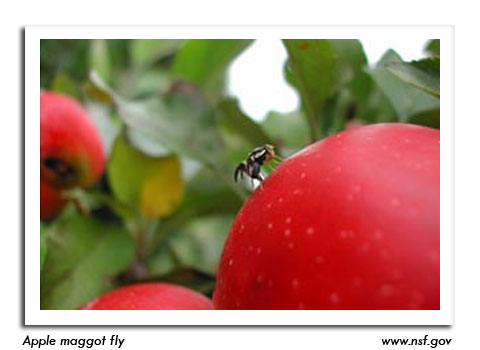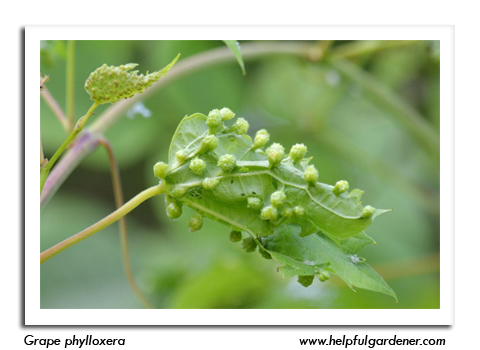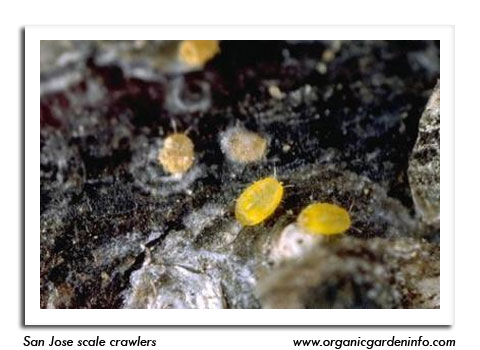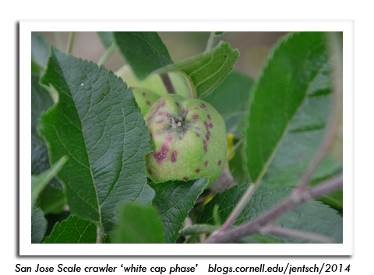
 |
|
|
Fruits
Volume 59 Number 10 Date 07/10/2014 APPLE MAGGOT - Emergence has been reported from apple orchards in Campbellsport and Plymouth where 1-2 flies were captured on traps in the past two weeks. Initial apple maggot treatments should begin 7-10 days after the first fly appears on a yellow sticky trap and immediately if the fly is found on a red sphere, with later sprays following at 10- to 14-day intervals as long as flies are appearing on traps. A trapping density of three red spheres per 10 acres is suggested. The economic threshold for apple maggot control is one fly per unbaited trap per week or five flies per baited trap per week. CODLING MOTH - The spring flight of moths has declined in most orchards and fruit damage is becoming apparent. The summer flight is expected to begin in the next two weeks. Apple growers are advised to check their records for the spring biofix to estimate the second biofix, which generally occurs 1,000 degree days (base 50°F) later. In preparation for the summer flight, growers should replace pheromone lures and begin more frequent trap checks. Larvicides or other controls should be maintained as long as counts remain above five moths per trap per week. JAPANESE BEETLE - Adults are emerging in southern and western Wisconsin and neonicotinoids or Neem oil spray to repel the beetles must be applied very soon, while populations are low and the beetles are still immigrating into the orchard. Neem oil is appropriate and effective for organic systems when applied repeatedly. PyGanic is another organically acceptable method for immediate contact control but dissipates quickly if applied during the day. A third option is kaolin clay (Surround WP) which deters both Japanese beetle and apple maggots, although its efficacy against Japanese beetle is inconsistent. GRAPE PHYLLOXERA - Grape growers concerned about the appearance of phylloxera galls on grape foliage are reminded that insecticide treatments should have been applied at the first sign of gall formation last month. No insecticide can reduce or eliminate the galls once they have formed on the leaves. SAN JOSE SCALE - First generation crawlers are settling and the "white cap" scales are appearing on fruits. Apple growers who did not tape scaffold branches earlier this season to monitor the crawlers should scout for the crawlers this weekend and consider implementing controls or flagging problem areas for more intense scouting when the second generation appears in August. Final treatment decisions must be made soon, while the bright yellow crawlers are still active. SPOTTED WING DROSOPHILA - A report issued by the UW-Madison Fruit Crops Entomologist, Christelle Geudot, confirms the year's first capture of SWD flies in Vernon County on June 30. Additional flies were collected in traps in Dane, Iowa, La Crosse and Rock counties this week. The threat of SWD to ripening fruit remains uncertain and it is not known if infestations will be as widespread or severe as in 2012 and 2013. The first appearance of flies should serve as an early warning to fruit growers to escalate monitoring efforts (checking traps twice weekly), install barrier netting, or make preparations for possible insecticidal control. The use of insecticides is not advised until SWD infestation is verified by trapping or visual inspection. After the first flies or larvae are confirmed, applications of one of the insecticides registered for control of SWD may proceed at 4- to 5-day intervals from ripening through harvest. A list of insecticide options can be found on the UW-Madison SWD website at http://labs.russell.wisc.edu/swd/management-2/. For organic operations, the OMFI-approved insecticides PyGanic and Entrust are available for SWD control. -- Krista Hamilton, DATCP Entomologist 





|
|
|